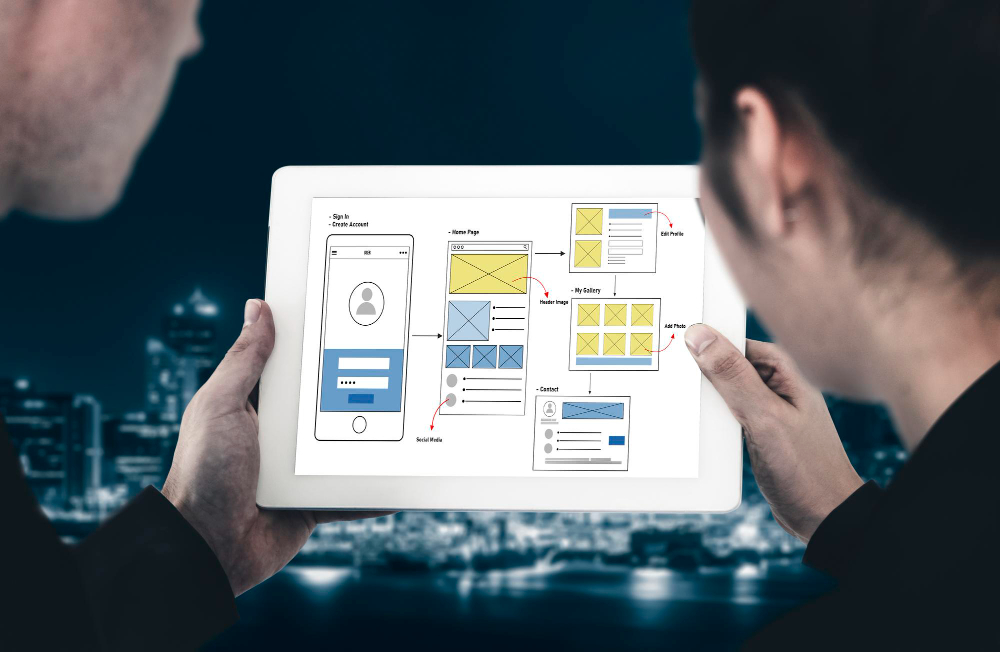The architecture for a web application is a structure resembling a web comprising multiple interconnected software components. This all-inclusive framework includes essential components such as databases, servers, UIs, programming languages, and their interrelationships. Together, these elements create desirable functionality and user experiences, which lead to the delivery of desirable online applications.
What are Web Apps?
These are computer programs launched on a web server and accessed by people with an active internet connection via a web browser (such as Google). Examples of web apps include Google Apps, Microsoft 365, and AOL Mail.
Languages like Javascript, CSS, HTML, and back-end services with any programming stack, including MEAN and LAMP, are used to develop a web application’s front end. Unlike mobile apps, web applications cannot be built using a specialized SDK.
What is Web Application Architecture?
Web Application Architecture is a framework that outlines the connections between databases, middleware systems, and applications to guarantee that various applications may cooperate. It is the web application’s blueprint, outlining the organization and communication between its parts.
Web application architecture is the basis for creating dependable, scalable, and secure web applications. Its ability to manage data, expand, and handle user traffic depends on its architecture.
Why is Web App Architecture Important?
Consumer expectations always change, market trends constantly shift, and a company’s growth never stops. A web application needs an architecture to provide a strong base. Otherwise, your business application will be sucked into the massive architectural anti-pattern.
A well-designed web application architecture can effectively manage different loads and adjust to changing business needs, resulting in a quick user experience that enhances the overall performance of the online application; you can quickly generate static and dynamic pages.
Through headless architecture businesses can break the structure into multiple tiny modules, you may also take on numerous development jobs concurrently, ultimately cutting down on development time. It also gets easier to include new features without changing the framework.
To reduce security risks, such as the danger caused by harmful programs, web design separates the application into multiple sections that are safeguarded independently. In addition, future-proof architecture enhances security and minimizes the risk of harmful software. Architectures allow applications to grow with the number of users while allowing for adding new features and low-delay.
How Does Web Application Architecture Work?
Every web application comprises a client (front-end) and a server (back-end). The front-end is the app’s visible portion. An interface allows users to interact with it as they see it. The client-side programming also reacts to user actions.
However, users cannot see the back-end, even though it processes their requests. Additionally, it manages the business logic in response to HTTP queries.
You control the front end when you input your information into a registration form. Once you click “enter,” the back end completes the registration process. With proper implementation, web application architecture can be developed to operate on both the server and client sides.
Key Objectives of Effective Architecture:
- Scalability: It ensures that heavier traffic does not affect the web application’s performance.
- Security: Safeguarding private information and making sure users interact safely.
- Performance: Delivering a quick and easy user experience.
- User Experience: The architecture needs a user-friendly interface that is easy to navigate.
- Flexibility: The ability to change according to new needs and technology.
- Cost-Effectiveness: Efficient use of resources to reduce operating expenses.
The architecture you select determines the success of your web application. It affects not only its development and maintenance but also its growth and evolution in response to your business requirements.
Components of Web Application Architecture:
As the applications differ in complexity and functionality, the number of layers and components changes accordingly. Sometimes, an app is simple enough to work as a monolith, storing all the web application design architecture in one place.
DNS:
DNS is an abbreviation for the domain name system. It’s a crucial component that links domain names with IP addresses. This is how an end user sends a request to a particular server.
Web App Servers:
In simple terms, this component is an app deployment description. It processes user requests and returns answers to the original browser. To make this happen, it refers to the back-end infrastructure, which includes the database, cache server, etc.
Database:
It provides several tools for performing, erasing, organizing, and updating data entries. Web app servers and job servers interact with each other directly most of the time.
CDN:
CDN stands for content delivery network. This system helps to send static content like photos and other files. It operates using multiple servers closer to end users than an application’s database. As a result, CDN significantly reduces load times by efficiently delivering content to users across the globe.
3-Tier Architecture in Web Applications
The three-tier architecture concept used in online applications consists of the presentation, application, and data layers. This method allows developers to produce more ordered code structures that are easier to manage. The data layer is responsible for data storage and extraction, the application layer handles business logic, and the presentation layer manages the user interface.
The three-tier framework is easier to maintain and has better scalability than the two-tier architecture. It allows for independent growth and updating by dividing concerns among the three layers. This separation also enhances security because each layer is a barrier to prevent direct access to sensitive data.
Types of Web Application Architecture
The following are the main categories of web application architecture that the design and development team uses:
1. Single Page Application (SPA):
The only app architecture for this web application is a single page with only content elements. This provides the optimal UX with dynamic interaction, allowing users to access the page more effectively and interactively.
2. Multi-Page Application:
Multi-page apps are in demand on the web. Nowadays, organizations choose them if their sites are huge. These solutions reload a website page to load or send data from a server through the users’ browsers.
3. Microservices Architecture:
Microservices architecture focuses on specific features and single-page applications for faster development and effectiveness. Creating codes that give applications the best possible performance and flexibility is simple.
3. Serverless Architecture:
Serverless architecture does not have infrastructure or correlation-related duties. This framework makes it easier for developers to construct web apps by allowing them to focus on third-party infrastructure instead of managing back-end servers. This architecture is different from microservices architecture.
4. Progressive Web Applications (PWA):
Progressive web-based solutions are designed to function on mobile devices similarly to native apps. They include touch alerts, remote access, and the ability to add an app to the home screen.
Summary:
Architecture is the ultimate ingredient of a modern web application. The requirements change so fast that staying updated takes a lot of work. A slight mistake can cost the life of your product in this world full of competition.
In the modern era, web application architecture must be designed by a professional, dedicated architect who knows where and why it fails.
VisionX offers various architectural services for online applications, specializing in developing secure and efficient web solutions to meet company objectives. One of their essential services is custom web application development.
They collaborate with clients to understand specific needs and create programs that align with organizational goals. VisionX strongly emphasizes using modern technology and industry-standard coding methods to ensure excellent performance and maintainability of web applications.


